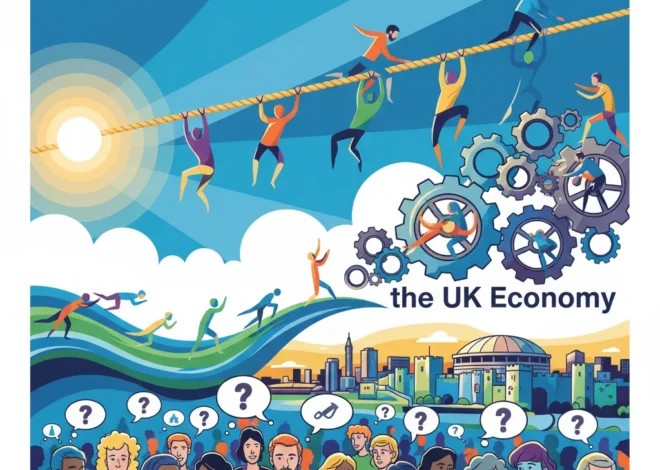
The Price of Preservation: Unpacking the New US National Park Fee for Global Investors
The Shifting Landscape of America’s Natural Treasures
The United States’ national parks, often called “America’s Best Idea,” are iconic landscapes of staggering beauty, drawing millions of visitors from across the globe each year. From the geysers of Yellowstone to the grand abyss of the Grand Canyon, these federally protected areas represent a cornerstone of both the American identity and its tourism industry. However, a significant policy shift is on the horizon. According to a recent announcement, non-US residents will soon face higher entry fees at 11 of the nation’s most frequented parks. While this may seem like a simple travel update, it is, in fact, a multi-layered economic event with profound implications for public finance, the investment landscape, and the broader U.S. economy.
For investors, finance professionals, and business leaders, this policy is more than just a line item on a vacation budget. It’s a real-world case study in public asset management, price discrimination as a revenue strategy, and the delicate balance between conservation funding and economic accessibility. This move signals a new approach to monetizing natural capital and addressing chronic underfunding, creating ripple effects that will be felt far beyond the park gates—from the stock market performance of travel-related companies to the local economies of gateway communities.
Deconstructing the Policy: A Strategic Move in Public Finance
At its core, the decision to implement differential pricing for international visitors is a direct response to a pressing financial reality. The National Park Service (NPS) has been grappling with a massive deferred maintenance backlog, estimated to be over $22 billion as of 2022. This staggering figure includes everything from crumbling roads and outdated visitor centers to decaying water systems and eroding trails. The existing funding model, heavily reliant on congressional appropriations and uniform entrance fees, has proven insufficient to address the wear and tear from ever-increasing visitor numbers.
This new fee structure is an application of a classic economic principle: price discrimination. The rationale is that U.S. residents already contribute to the upkeep of national parks through their federal taxes, while international tourists do not. By charging non-residents a premium, the NPS aims to capture revenue more equitably from those who use the resources. This is not just about raising funds; it’s a strategic shift in public finance, treating these natural assets as a service with a tiered pricing model reflecting the user’s contribution to the system’s underlying costs.
Below is a look at the parks slated to be part of this new initiative, which represent some of the most popular and resource-intensive locations in the system.
| National Park | State(s) | Key Attraction |
|---|---|---|
| Yellowstone | Wyoming, Montana, Idaho | Geysers, Hot Springs, Wildlife |
| Yosemite | California | Granite Cliffs, Waterfalls, Sequoias |
| Grand Canyon | Arizona | Vast Canyon Vistas, Colorado River |
| Zion | Utah | Steep Red Cliffs, Narrows Hike |
| Arches | Utah | Natural Sandstone Arches |
| Bryce Canyon | Utah | Hoodoos (Spire-Shaped Rock Formations) |
| Glacier | Montana | Glaciers, Alpine Scenery, Going-to-the-Sun Road |
| Grand Teton | Wyoming | Teton Mountain Range, Jackson Hole |
| Rocky Mountain | Colorado | Alpine Tundra, Trail Ridge Road |
| Sequoia & Kings Canyon | California | Giant Sequoia Trees |
| Acadia | Maine | Rocky Coastline, Cadillac Mountain |
The Trillion-Dollar Handshake: Decoding the High-Stakes Intersection of Geopolitics and Finance
The Economic Ripple Effect: From Wall Street to Main Street
A policy change at the gates of Yellowstone is not an isolated event; its tremors are felt across the U.S. economy. For those engaged in investing and trading, understanding these second- and third-order effects is crucial for identifying both risks and opportunities.
The most immediate impact will be on the travel and leisure sector. Publicly traded companies in this space are directly exposed to shifts in international tourism patterns. Consider the following:
- Hospitality Giants: Hotel chains like Marriott (MAR), Hilton (HLT), and Hyatt (H) with significant properties in or near these national parks could see a shift in their booking demographics. While a modest fee increase is unlikely to deter a determined traveler, it could influence the length of stay or spending on ancillary services. Analysts on the stock market will be watching occupancy rates and revenue per available room (RevPAR) in these specific markets.
- Airlines and Transportation: Airlines such as Delta (DAL) and United (UAL) that service airports near these destinations rely on the steady flow of international tourists. Any measurable dip in tourism could impact load factors on key international routes.
- Outdoor Retailers: Companies like VF Corporation (VFC), owner of The North Face, and Columbia Sportswear (COLM) benefit from a robust tourism industry that encourages the purchase of outdoor gear. A healthy national park system is, in essence, a marketing engine for their products.
Beyond Wall Street, the local economies of “gateway communities”—the small towns bordering these parks—are deeply intertwined with park visitation. These towns depend on tourist dollars to support everything from restaurants and souvenir shops to guide services and hotels. According to an NPS report, park visitors spent an estimated $23.9 billion in local gateway regions in 2022. A change in the volume or spending habits of high-value international tourists could significantly alter the financial health of these communities, presenting both a challenge and an opportunity for local business leaders and investors in regional development.
Implementation and the Fintech Opportunity
The practical execution of this policy opens a fascinating discussion about the role of banking and financial technology in the public sector. Collecting payments from a global customer base introduces complexities that modern fintech is uniquely positioned to solve. The NPS cannot simply put up a sign with a new price; it needs a seamless, secure, and efficient system.
This is where financial technology can play a transformative role. Instead of relying on traditional cash or credit card transactions at the gate, which can be slow and subject to high international banking fees, the NPS could partner with fintech firms to create a more sophisticated system. Imagine a future where:
- Dynamic Pricing Models: Using AI and data analytics, the NPS could implement dynamic pricing, adjusting fees based on peak seasons, demand, and even time of day to manage crowds and maximize revenue—a common practice in the airline and hotel industries.
- Integrated Digital Wallets: Collaboration with global digital payment platforms could allow international tourists to pay in their native currency through their preferred apps, simplifying the process and improving the visitor experience.
- Smart Contracts and Blockchain: In a more forward-looking scenario, the entire fee collection and allocation process could be managed on a blockchain. This would offer unprecedented transparency, allowing the public to see exactly how the additional revenue from international fees is being invested back into park maintenance and conservation projects. This application of blockchain technology could build public trust and create a new standard for accountability in government finance.
This policy, therefore, acts as a catalyst for technological modernization within a government agency, presenting a potential market for fintech and payment processing companies looking to expand into the public sector vertical.
Conclusion: The Evolving Economics of Conservation
The U.S. National Park Service’s decision to raise fees for foreign tourists is far more than a simple price hike. It is a pivotal moment at the intersection of conservation, economics, and technology. It reflects a global trend where governments and organizations are being forced to find innovative and sustainable funding models for priceless public assets. For the finance professional, it’s a lesson in public finance and the challenges of managing a multi-billion-dollar infrastructure deficit. For the investor, it’s a new variable to consider when analyzing the robust travel and tourism market. And for the tech visionary, it’s an open invitation to bring cutting-edge fintech and even blockchain solutions to one of America’s most cherished institutions.
As this policy rolls out, its success will be measured not just in the dollars and cents collected at the entrance gates, but in its long-term impact on park preservation, the visitor experience, and the delicate economic ecosystems that surround these natural wonders. It underscores a fundamental truth for the 21st century: protecting our most valuable assets, whether natural or financial, requires a sophisticated understanding of the complex economic forces that shape our world.
Beyond the Headlines: The Epstein Files and the New Era of Financial Accountability

